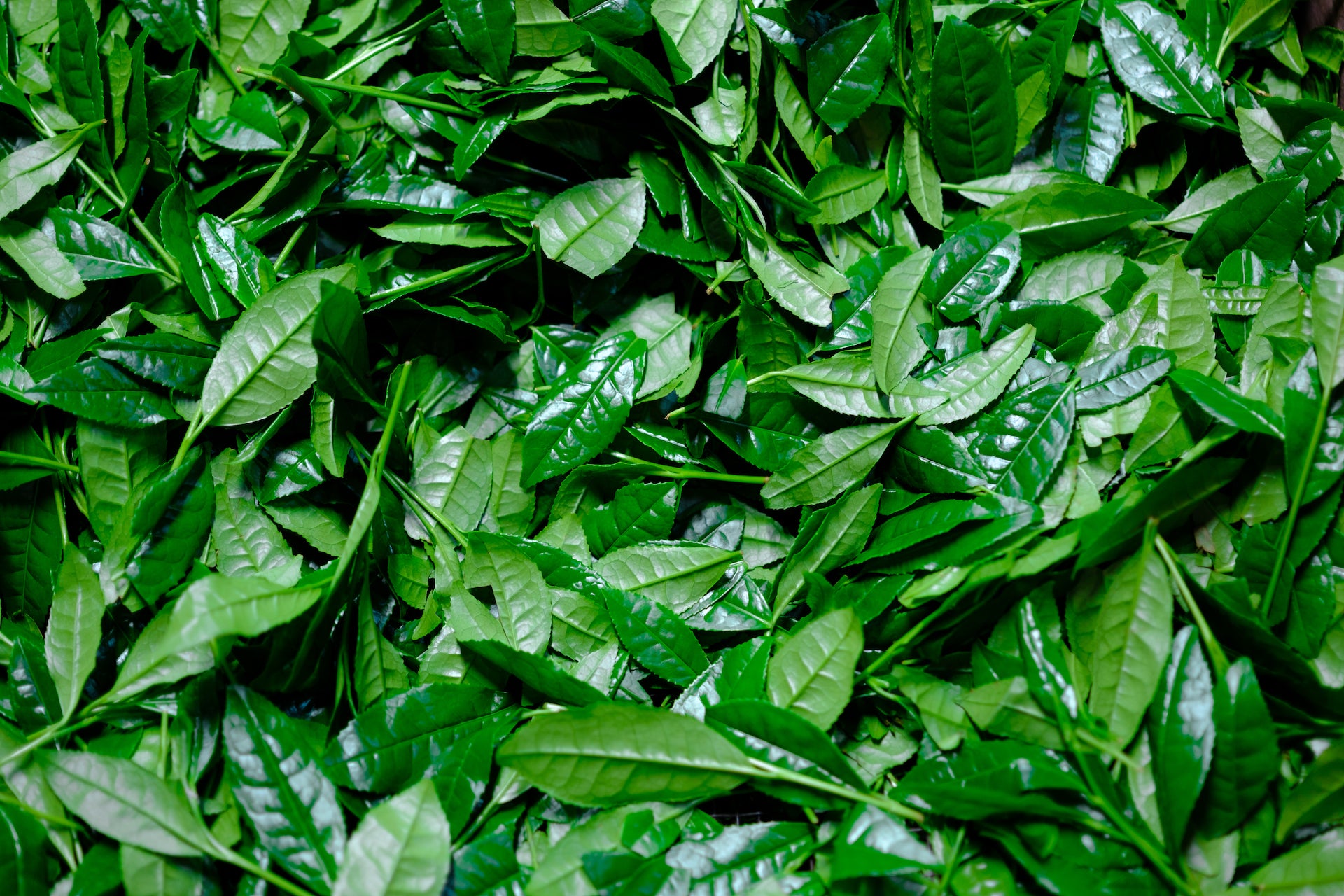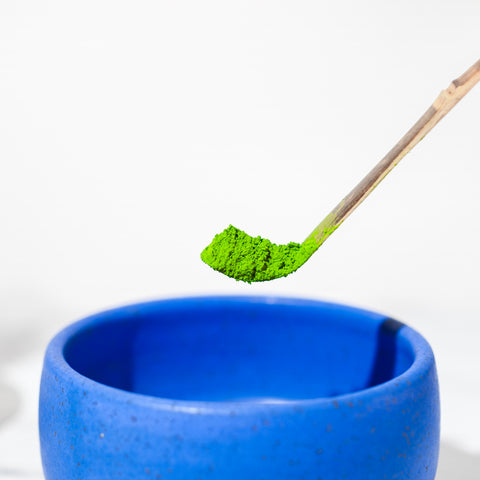
Everything You Need to Know About Catechins in Japanese Green Tea – what is EGCG?
We've all heard of the countless benefits of drinking Japanese green tea. But today we're getting down to the science of the incredible antioxidants that make up about a quarter of a fresh tea leaf’s dry weight — catechins. Catechin probably isn’t a word you hear very often, but they play a major role in all tea, especially Japanese green tea.
Understanding catechins can be complex, so we're here to answer all your questions. What exactly are catechins? What is their significance in Japanese green tea? Grab your favorite brew as we dive deep into catechins and why they are so cool!
What are Catechins?
Catechins are chemical compounds that fall under several categories, including polyphenols, flavonoids, and antioxidants. A catechin is first a polyphenol, or a large family of naturally occurring compounds often found in plants like fruits, vegetables, herbs, spices, and of course, tea!
 Epigallocatechin gallate
Epigallocatechin gallate
Polyphenols include diverse compounds abundant in Japanese green tea, such as flavonoids and tannins. Flavonoids are a subgroup of powerful antioxidants with anti-inflammatory properties and the potential to fight off harmful molecules.
Catechins are a part of the flavonoid family, naturally occurring in diverse food groups, from peaches to vinegar. Along with tannins, catechins are responsible for the bitterness and cherished astringency in Japanese green tea.
Why is Japanese Green Tea a Catechin Powerhouse?
Compared to other teas, Japanese green tea is a powerhouse for catechins. With 10 kinds of catechins in total, they make up nearly 25% of the dry weight of a fresh green tea leaf. But why is Japanese green tea so high in catechins? It all comes down to the way the tea is harvested and processed.
Oxidization kills catechins. Unlike other tea styles, such as black and oolong, producers avoid high oxidization levels when processing Japanese green tea. Many Japanese green teas are steamed immediately after harvesting to halt the oxidization process. Still, different types of green tea have various levels of catechins. Younger leaves, like those used for matcha, contain more catechins than older leaves.
 Assessing freshly harvested leaves
Assessing freshly harvested leaves
Many other factors determine catechin levels, from sun exposure to harvesting time. Using whole leaves versus leaf fragments or stems further affects catechin content, as intact leaves contain more catechins. Teas produced from later harvests also have more catechins. Even the steeping time and amount of leaves used will affect the number of catechins extracted in each brew.
Epicatechin (EC), epicatechin gallate (ECG), epigallocatechin (EGC), and epigallocatechin gallate (EGCG) are some of the most common catechins that make up the green tea plant, with EGCG often stealing the spotlight.
EGCG: The Best-Known Green Tea Catechin
EGCG may just be the most well-known catechin in Japanese green tea. Between 50% and 80% of green tea is EGCG. The potent antioxidant stops oxidization, limiting free radical production. Free radicals occur naturally in the body, but too many can cause dangerous health issues like cancer and chronic inflammation. Hence why EGCG is such a highly sought-after catechin.
With a higher antioxidant content than vitamins C and E, EGCG has countless health benefits, like reducing inflammation, improving brain function, and helping the gut microbiome produce healthier lactate levels. Yet, the other catechins shouldn't just be ignored. Each catechin type has unique benefits, from improving energy and endurance to potential antitumor properties.
EGCG also plays a significant role in bitterness and astringency levels. High levels of EGCG can result in intensely astringent tea. That’s why achieving a balanced flavor profile with astringency is typically a priority for Japanese green tea producers. For centuries, producers have mitigated astringency in high EGCG teas like matcha and gyokuro by shade-growing the tea plants, harvesting younger leaves, growing tea in higher elevations, and blending different cultivars of tea.
High Catechin Japanese Green Teas
Of all Japanese green teas, matcha, gyokuro, and sencha are believed to be the highest condensed sources of catechins, particularly EGCG. Just one serving (1g) of high-quality matcha contains about 30- 40mg of EGCG, compared to only 18mg in hojicha. But if all tea is essentially the same plant, how do certain styles have higher catechin levels? Once again, harvesting and processing methods play a huge part.
When it comes to the highest catechins, matcha hits all the marks. High quality matcha is made by harvesting tencha – by using the smallest, youngest, spring-grown leaves of the tea plant. Because the entire leaf is stone-milled in production and consumed directly, the drinker receives the highest catechin levels available in a tea. Following close behind is gyokuro – generally produced with younger, higher-quality leaves. Kabusecha, or a shade-grown sencha, and some types of exceptional quality sencha follow close behind. Sometimes sencha is thought to have the highest amount of catechins, because if grown in an orthodox fashion, its exposure to the sun is thought to concentrate high amounts of catechins.
 Freshly harvested tea leaves picked by Mizuba partner farms in Japan
Freshly harvested tea leaves picked by Mizuba partner farms in Japan
Over the past few years, marketing around the popular idea that matcha having 137x more catechins than regular green tea has become popular. Be aware that this claim is misleading. While matcha is high in catechins, during the shad-growing process many catechins are converted to another prized nutrient — the amino acid L-theanine. Sun-grown teas (sencha) can contain more catechins because the shading process isn’t applied, and the catechins aren't converted into EGCG.
Low Catechin Japanese Green Teas
Some Japanese green teas are naturally lower in catechins, while others lose their catechin content through processing. Let’s take bancha, for example. Even though bancha comes from the same tea plant as sencha, its catechin levels are lower for a few reasons. Bancha’s leaves are more mature and harvested during the 2nd or 3rd flush. Bancha is also produced using larger, more mature leaves with fewer catechins.
Other styles of Japanese green tea, like hojicha and genmaicha, typically have lower catechin levels because of how they're processed. Roasted teas like hojicha are lower in catechin content because the catechins are killed off once processed with heat. Genmaicha, on the other hand, contains toasted rice mixed with green tea leaves (of which sometimes are from later harvests). Since there are fewer green tea leaves, catechin levels are lower.
 Our friend enjoys a freshly-steeped pot of Mizuba organic Genmaicha
Our friend enjoys a freshly-steeped pot of Mizuba organic Genmaicha
Explore Catechins in Japanese Green Tea
While the excitement around catechins is mostly due to health benefits, they also play a meaningful role in how tea producers balance flavor profiles in various styles of Japanese green tea. As mentioned above, catechins can have an astringent flavor — so producers will keep that component in mind when balancing the rest of the polyphenols and flavors of the tea.
Learning more about catechins can help you taste the differences in your tea and understand the diverse flavors and mouthfeels of the many types, ultimately helping you discover the styles you enjoy the most.
By Mariah Bourne + Lauren Danson
Leave a comment
Comments will be approved before showing up.




